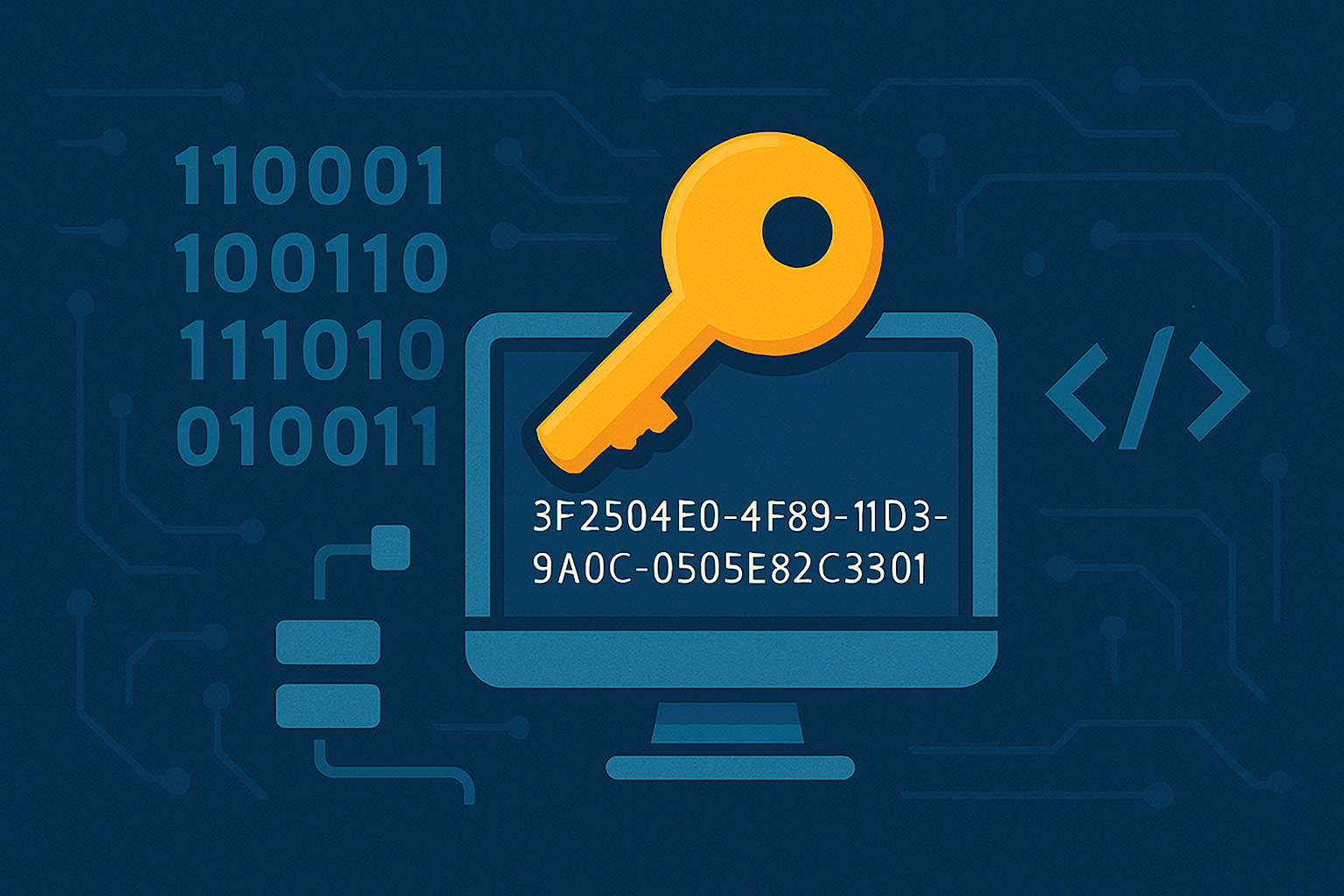Everything to know about GUID / UUID
March 31, 2025

In the world of software development and database management, unique identifiers play a crucial role in ensuring data integrity, tracking objects, and maintaining system coherence. One of the most widely used types of unique identifiers is the GUID (Globally Unique Identifier) or UUID (Universally Unique Identifier). These identifiers help developers create unique values that are nearly impossible to duplicate, even across different systems.
What is a GUID / UUID?
A GUID (Globally Unique Identifier) or UUID (Universally Unique Identifier) is a 128-bit number used to uniquely identify objects in computer systems. While both terms are often used interchangeably, GUID is the term more commonly associated with Microsoft's implementation, whereas UUID is the broader industry standard defined by the Internet Engineering Task Force (IETF) and the Open Software Foundation (OSF).
A typical GUID/UUID is represented in a standardized format of 32 hexadecimal characters, often displayed in five groups separated by hyphens, like this:
550e8400-e29b-41d4-a716-446655440000
This structure ensures that the identifier remains readable while retaining its unique properties.
Versions of GUID / UUID
UUIDs are classified into different versions based on the method used to generate them. The most commonly used versions include:
- UUID v1 (Time-based)
- Generated using the current timestamp and the device’s MAC address.
- Ensures uniqueness but can expose system information (e.g., MAC address).
- Structure:
- Timestamp (60 bits)
- Clock sequence (14 bits)
- Node (48 bits, usually the MAC address)
- Example:
a6c64a20-4f0b-11ee-8c99-0242ac130002
- UUID v2 (DCE Security)
- An improvement over v1, adding additional security features.
- Less commonly used.
- Structure:
- Similar to v1 but includes a local domain and POSIX UID/GID.
- Example:
f81d4fae-7dec-21d0-a765-00a0c91e6bf6
- UUID v3 (Name-based, MD5 Hashing)
- Uses a combination of a namespace and an input name, hashed with MD5.
- Produces deterministic UUIDs (same input results in the same UUID).
- Less secure due to MD5 vulnerabilities.
- Structure:
- Namespace UUID (128 bits)
- Name (variable-length input)
- MD5 hash (128 bits)
- Example:
6fa459ea-ee8a-3ca4-894e-db77e160355e
- UUID v4 (Random-based)
- Generated using random numbers.
- Most commonly used version due to its high level of uniqueness and lack of dependency on time or hardware.
- Structure:
- A version 4 UUID has 128 bits (16 bytes), represented as 32 hexadecimal characters grouped into five sections separated by hyphens: 8-4-4-4-12.
- The 13th hexadecimal character (in the third group) is always 4, indicating the version.
- The 17th hexadecimal character (in the fourth group) starts with 8, 9, A, or B, marking the variant.
- Example:
fe47e122-4c94-4cb2-aad9-a77d0b9c75e8
- UUID v5 (Name-based, SHA-1 Hashing)
- Similar to v3 but uses SHA-1 instead of MD5.
- More secure than v3 but still deterministic.
- Structure:
- Namespace UUID (128 bits)
- Name (variable-length input)
- SHA-1 hash (128 bits, truncated to fit UUID format)
- Example:
e902893a-9d22-5c7e-8540-53bbd1f9a8a1
How is GUID / UUID Used?
GUIDs and UUIDs are used across various domains, including:
- Databases: Ensuring unique records across distributed systems.
- Software Development: Identifying resources, sessions, and transactions uniquely.
- Web Applications: Tracking user sessions and preventing duplicate entries.
- Cloud Computing: Generating unique instance IDs for virtual machines.
- IoT and Distributed Systems: Ensuring unique identification of devices and objects.
Generating a GUID / UUID
For developers needing to generate GUIDs, various programming languages offer built-in methods:
- Python:
import uuid; print(uuid.uuid4()) - JavaScript:
crypto.randomUUID() - Java:
UUID.randomUUID() - C#:
Guid.NewGuid()
Alternatively, online tools like Ubikami GUID Generator provide an easy and quick way to generate UUID v4 identifiers without needing to write code.
Conclusion
GUIDs and UUIDs are essential for creating unique, conflict-free identifiers across multiple applications and systems. Whether used in databases, distributed applications, or security contexts, these identifiers help maintain consistency and uniqueness efficiently. If you need a quick and reliable way to generate UUID v4, tools like Ubikami GUID Generator can simplify the process.